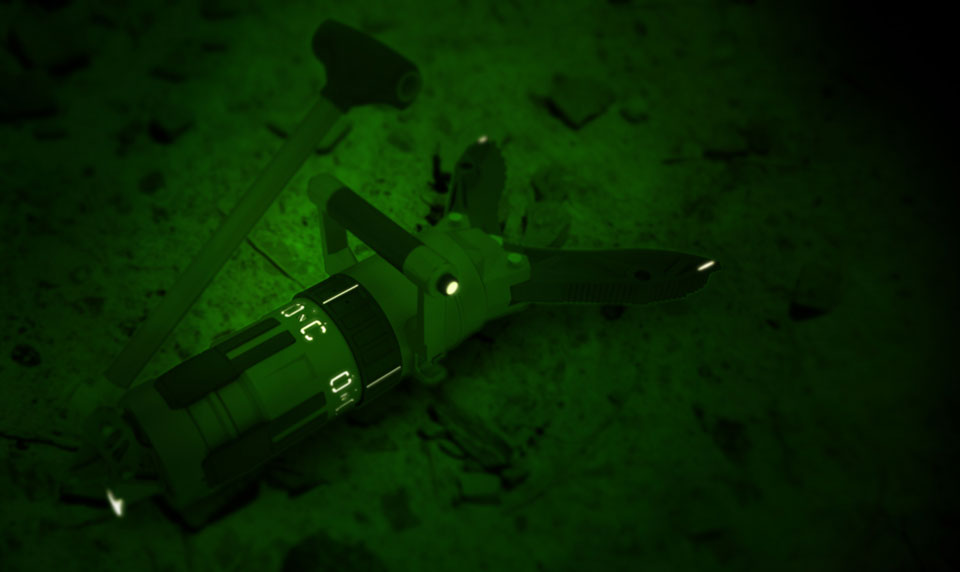The U.S. Air Force connected with Thinklabs because their extrication tool, which they use to rescue soldiers, was not optimal. Soldiers in the field felt the tool was cumbersome, slow, and lacked the capability they desired. Thinklabs went to North Carolina and used ethnographic and participatory research methods to discover more opportunities to improve their current rescue tool beyond what was initially conceived.
Soldiers were observed struggling with the non-intuitive setup of the tool and poor functionality. Awkward handle rotation was limiting the user experience in tight situations where a few moments could mean life or death. Rescue missions at night were seen to be extremely difficult for soldiers. The night-vision goggles divided a users vision into long distance & immediate area viewing. These visual handicaps lead to decreased efficiency at all tasks.
Thinklabs set off to make the tool efficient in all aspects witnessed during our visit with the soldiers. Their struggles became our struggles. Their frustrations became our frustrations. And their happiness became our motivation.







